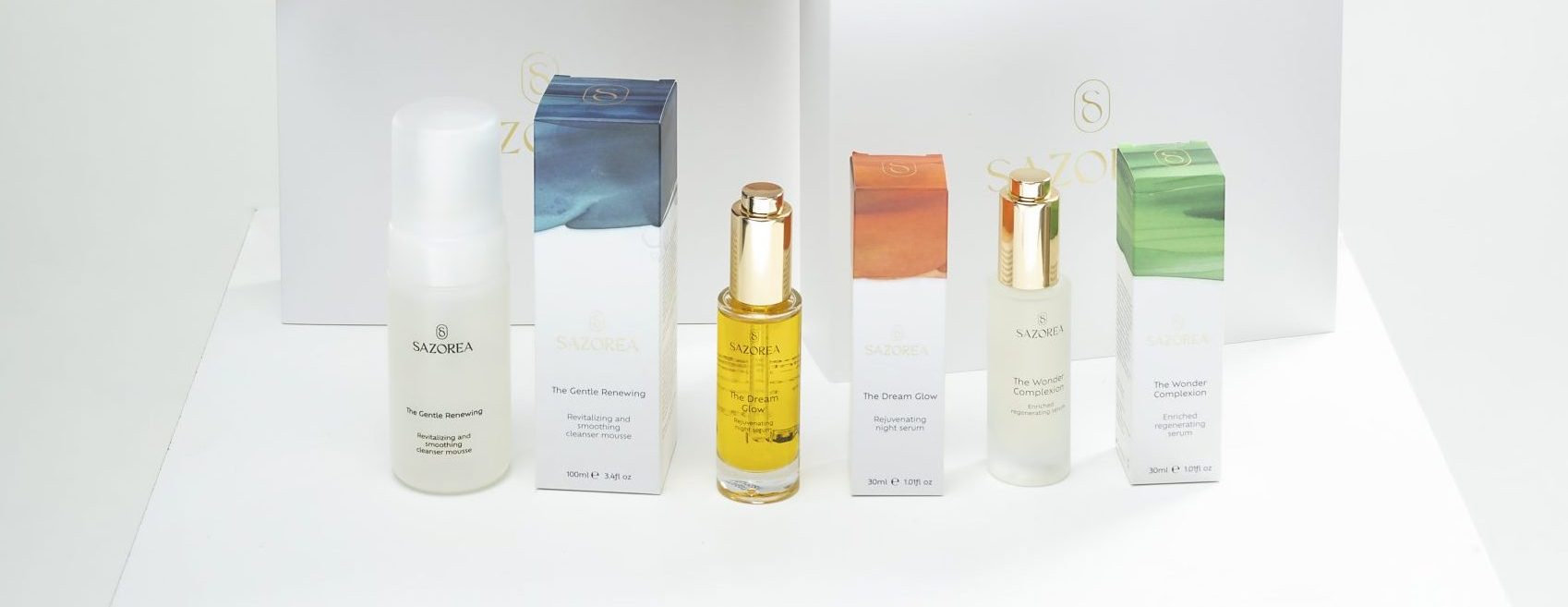
The 3 questions I get asked the most about Sazorea — and the answers I love giving
A soulful FAQ, from my skin to yours. If there’s one thing that warms my heart since Sazorea was born,

Functioning as the external interface of the human body with the environment, the skin acts as a physical barrier to prevent the invasion of foreign bodies while being inhabited by commensal organisms: the microbiota – a complex community of microbes, including bacteria, fungi, and viruses. These microorganisms and the environment around them make up the microbiome.
The skin microbiome is tremendously diverse in the number and activity of organisms. The composition of the microbiome depends on intrinsic factors: both the body part and the skin of each body part have different microbial compositions, and the skin’s physiology, which is related to a microenvironment characterized by moisture, dryness, and sebaceous content. Additionally, the skin microbiome undergoes temporal changes with age and also varies with genetics and gender. Finally, the microbiome is influenced by extrinsic factors such as diet, lifestyle, hygiene routine, geographic location, climate, weather, use of antibiotics, and cosmetics.
The microbiome is essential for maintaining the skin barrier function, participating in essential physiological processes that occur in the skin. The microbiome also directly interacts with pathogenic microorganisms found on the skin’s surface.
In particular, the microbiome participates in the performance of skin barrier functions, in physical, chemical, microbial, and immunological ways. These interrelationships are the product of a well-controlled and delicately balanced microbiome.
However, this balanced system can quickly become unstable due to continuous exposure to various extrinsic and intrinsic factors, including pollution, sun damage, and skin irritants.
Changes in the skin microbiome can lead to pathophysiological problems, inducing inflammatory skin conditions:
How can I improve my skin microbiome with skincare?
Balancing your skin’s microbiome requires a combination of prebiotic, probiotic, and postbiotic ingredients. It’s important to find microbiome care that combines these three elements to enhance results.
The skin’s pro, pre, and postbiotics work together to maintain the microbiome balance:
When the microbiome is stable and healthy, you’ll see and feel the results on your skin:
Our The Wonder Complexion serum contains ingredients that protect the microbiome and strengthen the skin barrier:
Glyceryl glucoside
Ceramides
Ceramides make up about 50% of the skin barrier lipids and are essential for a healthy and hydrated skin barrier. And a strong skin barrier keeps the microbiome balanced.
References:
Boxberger M, Cenizo V, Cassir N, La Scola B. Challenges in exploring and manipulating the human skin microbiome. Microbiome. May 30, 2021;9(1):125. doi:
10.1186/s40168-021-01062-5. PMID: 34053468; PMCID: PMC8166136.
Byrd AL, Belkaid Y, Segre JA. The human skin microbiome. Nat Rev Microbiol. March 2018;16(3):143-155. doi: 10.1038/nrmicro.2017.157. Epub 2018, January 15. PMID: 29332945.
Eisenstein M. The skin microbiome. Nature. December 2020;588(7838):S209. doi: 10.1038/d41586-020-03523-7. PMID: 33328671.
Flores L, Grice EA. The Skin Microbiota: Balancing Risk and Reward. Cell Host Microbe. August 12, 2020;28(2):190-200. doi: 10.1016/j.chom.2020.06.017. PMID: 32791112; PMCID: PMC7444652.
Lee HJ, Kim M. Skin barrier function and microbiome. Int J Mol Sci. October 28, 2022;23(21):13071. doi: 10.3390/ijms232113071. PMID: 36361857; PMCID: PMC9654002.
Luna PC. Skin microbiome over the years. Am J Clin Dermatol. September 2020;21(Suppl 1):12-17. doi: 10.1007/s40257-020-00549-5. PMID: 32910437; PMCID: PMC7584528.
Sinha S, Lin G, Ferenczi K. The skin microbiome and the gut-skin axis. Clin Dermatol. September-October 2021;39(5):829-839. doi: 10.1016/j.clindermatol.2021.08.021. Epub 2021, September 3. PMID: 34785010.
Smythe P, Wilkinson HN. The Skin Microbiome: Current Landscape and Future Opportunities. Int J Mol Sci. February 16, 2023;24(4):3950. doi: 10.3390/ijms24043950.
PMID: 36835363; PMCID: PMC9963692.
Swaney MH, Kalan LR. Living on your skin: microbes, molecules, and mechanisms. Infect Immun. March 17, 2021;89(4):e00695-20. doi: 10.1128/IAI.00695-20.
PMID: 33468585; PMCID: PMC8090955.
Yang Y, Qu L, Mijakovic I, Wei Y. Advances in the human skin microbiota and its role in skin diseases. Microb Cell Fact. August 29, 2022;21(1):176. doi: 10.1186/s12934-022-01901-6. PMID: 36038876; PMCID: PMC9422115.

A soulful FAQ, from my skin to yours. If there’s one thing that warms my heart since Sazorea was born,

In the heart of Paris, on a night dedicated to the best of European natural cosmetics, the Azores took the

Today I begin this new chapter of our Notebook with a very special share: the origin of the name Sazorea